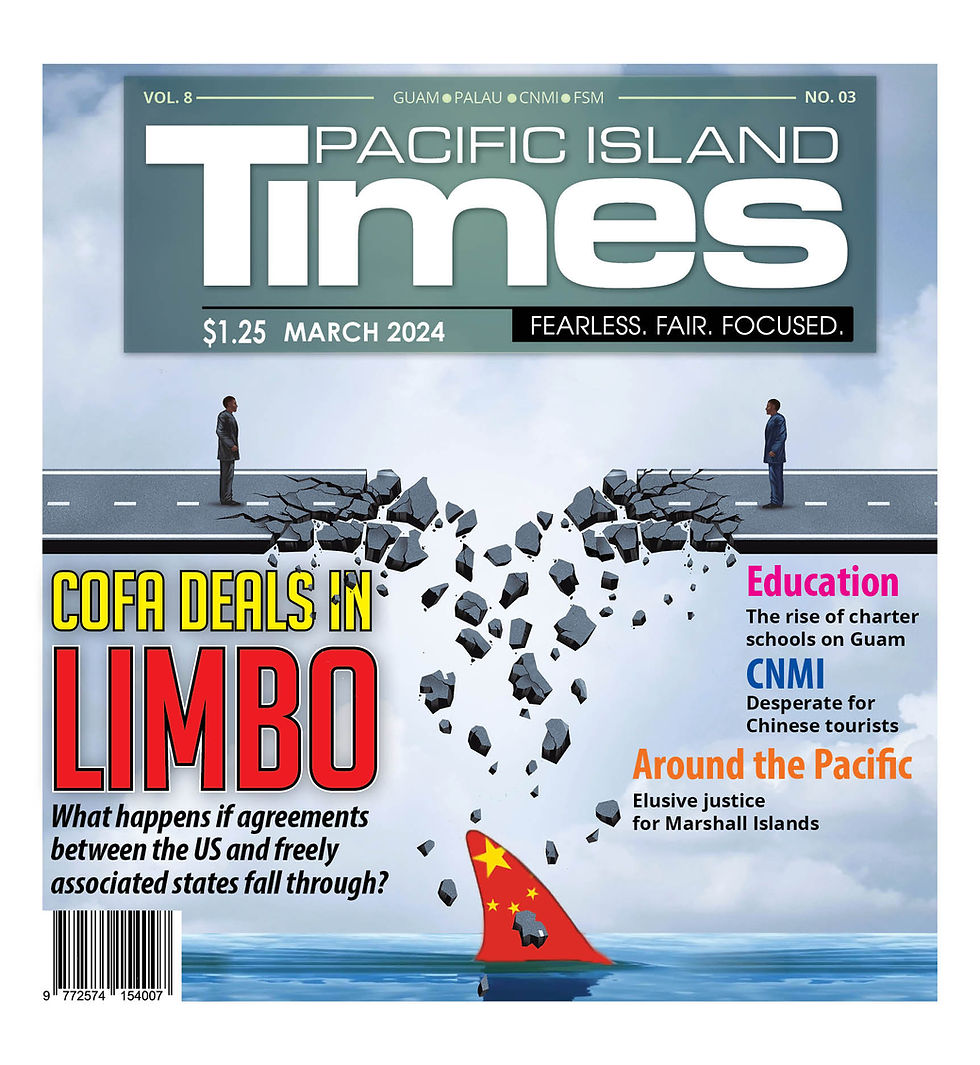
By Pacific Island Times News Staff
Plans are afoot to build an additive manufacturing technology and workforce education center on Guam that will enable the submarine industrial base to print components on-demand at the point of need.
The Applied Science & Technology Research Organization of America or ASTRO America joined Gov. Lourdes A. Leon Guerrero and U.S. Navy Rear Admiral Scott Pappano, program executive officer of Strategic Submarines, at a joint meeting last week, where they announced the project plan for the 3D printing center.
In a press release, ASTRO said the project will advance Guam's goal to diversify and expand its economy.
The government of Guam has commissioned a study by ASTRO America, a manufacturing policy think-tank, to evaluate the feasibility of bringing such technology to Guam.
"The project’s success will be measured by the team’s efforts to catalyze the growth of a specialized advanced manufacturing workforce, as well as necessary capabilities to produce parts that will meet growing national security needs for the submarine industrial base," ASTRO said.
ASTRO said the center is envisioned to form a workforce skilled in key science, technology, engineering, and mathematics, or STEM, careers, while building out a new industry sector capable of delivering complex ship components.
“Our announcement marks a historic inflection point for both the Government of Guam and the United States Submarine Industrial Base,” said Neal Orringer, president of ASTRO America and former Department of Defense director of manufacturing.
“Working together, we will build an innovative and resilient technology base. Not only will we train a new generation of advanced manufacturing engineers, and operators but we will ensure the Navy’s access to critical capabilities for prototyping, producing, and validating key parts, components, and materials through advanced manufacturing and 3D printing capability," said Orringer, former director of manufacturing at the Department of Defense.
The project plan involves three key phases to develop and sustain submarine industrial base capabilities in the Indo-Pacific.
Phase 0: Structure and Business Plan
This phase, announced earlier this year, includes designing an advanced manufacturing technology and education center on Guam, with plans to procure, position and operate industrial equipment on the island.
A satellite campus at the University of Guam will comprise several partners that are mainland U.S.-based universities with leading industrial manufacturing higher education programs.
This concept will include strategies for the campus’ long-term training, operation, and sustainment. Details for building capabilities on-site for part-production and test/evaluation will be developed, in concert with the leading submarine industrial base and government officials to ensure supply can meet demand in Guam.
Phase 1: Staging and Transition
While the government of Guam is constructing a permanent facility, the team will procure equipment and position technology appropriately within shipping container modules to establish initial capability and determine optimal factory equipment and large-scale testing configuration for the qualification of advanced shipbuilding tools and components.
The campus will be operational, enrolling students with appropriate support staff and technology integration. Additionally, use-cases will demonstrate the effectiveness of the team’s short- and long-term approach to part prototyping and validation.
Phase 2: Deployment and Operational Launch
In the next stage, modules with 3D production and advanced inspection equipment will be positioned and transitioned for implementation on Guam. Coursework will be underway for students in Guam for on-island credentialed higher education, as well as prototyping and testing/evaluation of naval ship production parts to support the submarine supply chain.
ASTRO said each of these phases will be carried out in close coordination with and direction from another leading defense nonprofit organization, BlueForge Alliance, which serves as a system integrator for the submarine industrial base’s broad-based initiatives across every region of the United States.
Officials said the project plan will also involve the Guam Economic Development Authority and the University of Guam in establishing a facility and investments by BFA on behalf of the Navy to advance common goals, including enabling the future tri-lateral AUKUS partnership.
“This plan will create new job opportunities for Guam while contributing to America’s national security interests. It’s a win-win," Leon Guerrero said.
“The Navy is excited to be working with the government of Guam and the great team at ASTRO on this vital mission to further the national imperative for advanced manufacturing capability and the workforce to execute those requirements in a strategic location that directly benefits our ships and submarines,” Pappano said.
The project is expected to be informed by Phase I of the feasibility study completed for the Guam Economic Development Authority last year, as well as the second report being completed with the Guam Bureau of Statistics and Plans.

Subscribe to
our digital
monthly edition



Comments